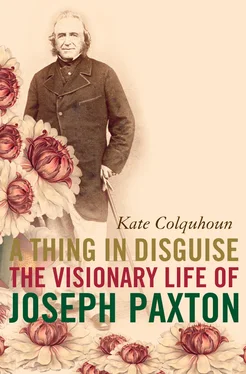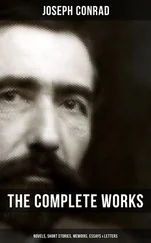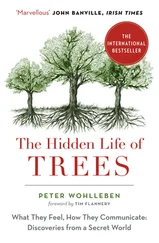Paxton’s eldest brother, William, had become the bailiff and superintendent of the estates at Battlesden Park on a salary of £ 100 a year. In 1816, when his youngest brother was fifteen, William took on two leases there. The first, in March, was for 28 acres of meadow or pasture at a cost of £ 65 a year and included an understanding that he would take on a servant and a horse at his own expense, but keep all rents and profits generated on the land. The second, in December, formed an agreement to rent the entire garden ground for four years at a cost of £ 16 16s. This comprised ‘four pieces of garden ground used as kitchen garden, fruit garden, old orchard and nursery, pond garden and house garden’, about two and a half acres in total. Also a cottage, ‘but not the pleasure garden nor the hot houses or plants and ponds thereon’. The fruit garden alone was enormous: filled with peach, nectarine, apricot, damson, cherry, plum, pear and apple trees as well as raspberries, currants and gooseberries.
The running of Battlesden had become something of a Paxton family business. His brother, Thomas, now ran the home farm at Potsgrove (part of the Battlesden Estate); he leased land from Sir Gregory as well as acting as his land agent, successfully occupying 415 acres and employing 21 labourers. Paxton probably went to live and work with William as a gardening boy at Battlesden from around the date of these leases when he would have been fifteen or sixteen. In gardens filled with fruit trees, flowers and, since there were hothouses, presumably exotic and tender plants as well, he was first introduced to the wonders of botany and horticulture and began to learn the rudiments of his trade. Paxton’s granddaughter, Violet Markham, suggests that William treated him very severely and he ran away to Essex where he was taken in by a Quaker, who encouraged him to return to Battlesden. It is impossible to substantiate this story, though it is clear that later in life Paxton, far from hating William, remained fond of his much older brother, taking time out of hectic schedules to visit him and his family.
Aged fifteen, Paxton left his brother in order to work at the estate of Woodhall near Walton in Hertfordshire. The house had been bought by Samuel Smith in 1801 and Paxton was to work there under the charge of William Griffin. He was lucky. Here was an eighteenth-century park and woodland, with new gardens lately built around the house, run by an ardent horticulturist and reputed fruiterer. Griffin was the author of a treatise on the ‘Culture of the Pine Apple’ as well as a paper on the management of grapes in vineries; he was a part of the coalescing horticultural establishment and his name appears in 1824 among the first subscribers to the new Horticultural Society Gardens at Chiswick. A professional with a reputation for giving thorough and kindly instruction to the young men who worked with him, it is entirely possible that Griffin filled Paxton’s head with stories of the new society in London and that he encouraged the boy to think of a time when he might apply to them for a position in one of their gardens.
After an apprenticeship of about three years, the young Paxton was attracted back to Battlesden Park and the gardens, where he found himself in charge of the excavation of a large lake called the New Fish Pond. Great amounts of earth would have been removed by hand and in wheelbarrows, relying largely on observation and reasoning rather than any engineering calculus. By 1823 Sir Gregory was already showing signs of the insanity into which he would soon collapse, and was declared bankrupt with liabilities of over £ 100,000 – the entire contents of his house would be sold at auction by Christie’s the following year. Paxton had witnessed the sort of upper-class profligacy that would later find its echo in his patron, the 6th Duke of Devonshire. The house and gardens at Battlesden have not survived, but this new fish pond, with its island, bulrushes and the company of swans, can still be found today, surrounded only by fields. Its construction provided Paxton with experience he would later call upon as he undertook huge earthworks at Chatsworth.
On 14 April 1823, aged 62, Paxton’s mother died and was buried in the village church at Milton Bryant. One month later Paxton’s uncle Thomas followed her. Paxton’s thoughts turned to London and the chance of advancement through the profession of gardening. He was almost 20 and, with the incarceration of the lunatic Sir Gregory, he was out of a job. Some records suggest that he obtained work first in the gardens at Wimbledon House, leased by the Duke of Somerset, and it is certain that his brother James was a gardener there. Perhaps it was here that sibling disaffection raised its head. Many years later the Duke of Devonshire wrote to his gardener that it would take only one word from Paxton to secure James a position as gardener and bailiff to Lady Dover, yet the Duke imagined that Paxton would not like to recommend his brother.
It has also been suggested that at around this point Paxton went to work in the gardens of the famous nurserymen Messrs Lee and Kennedy in London, though there are no records to support this. Whatever the case, by November 1823 Paxton had turned his attention to the new gardens of the Horticultural Society in Chiswick, and in so doing, secured the direction of his own future.
*He was regularly in court to determine his state of mind. In December 1823 he was found to be of ‘unsound mind', rather than a lunatic. The jurors heard that hundreds of clocks and watches were found scattered all over the house in Bedfordshire, in a serious state of disarray. Morning Herald , 13 and 20 Dec. 1823.
Side by side with the political and social revolutions sweeping Europe ran a cultural revolution most keenly associated with the growth of science. Interest in plants and gardening, which had been developing throughout the eighteenth century, leapt into a new life which some have called the fourth, garden revolution. From the Romans to John Tradescant in the 1620s, new plants had been arriving in England regularly if slowly. Tradescant himself had brought the apricot from Algiers as well as the first lilac. But from the middle of the eighteenth century plants were coming from all corners of the globe, predominantly from South America, the Cape and, later, North America. Between 1731 and 1789 the number of plants in cultivation increased over fivefold to around 5,000. The thirst for information about new plants was becoming insatiable and driving a need for new publications. Philip Miller at the Botanical Gardens in Chelsea then dominated the gardening world with his massively popular Gardener’s Dictionary of 1731 and, at Kew, William Aiton’s first full catalogue of plants, Hortus Kewensis , was first published in 1789.
Initially, new trees such as the tulip tree and magnolia, as well as hugely popular plants like the first American lily, Lilium superbum (which first flowered in 1738) were shipped back to England mainly by settlers. By the later part of the century, voyages of exploration such as Cook’s three expeditions between 1768 and 1779 were unearthing unimagined botanical riches *set to transform the English garden and the role of the gardener in it. So many new plants were arriving in Britain, that Miller saw the species at Chelsea increase fivefold during his tenure alone. On 1 February 1787, the first periodical in England devoted to scientific horticulture, The Botanical Magazine or Flower Garden Displayed , edited by William Curtis, was published aimed foursquare at the rich and fashionable who had begun to cultivate exotics with passion. Designed ‘for the use of such ladies, gentlemen and gardeners as wish to become scientifically acquainted with the plants they cultivate’, it was expensively priced at one shilling in order to cover the costs of hand-coloured plates. It was nevertheless hugely popular and provided yet more stimulus to the culture of ornamental plants.
Читать дальше











